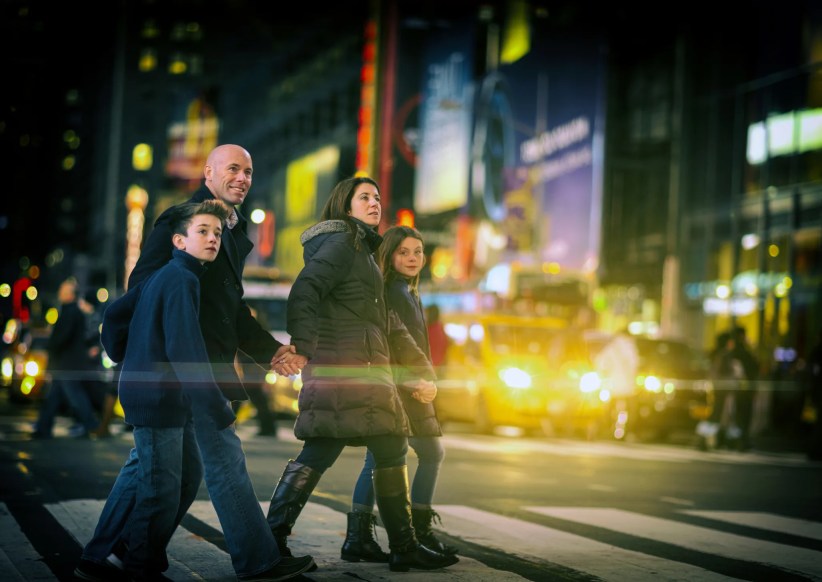A Latino group monitoring the US Census Bureaus efforts to improve its accuracy and efficiency in capturing the population and demographics of the country has concerns about a practice census that the federal agency is about to launch in four parts of the country one in northwest Queens.
The 2004 Census Test, one of many preludes to the real deal in 2010, will start in April and run until June. Its purpose is to examine the format of the questionnaire and the method by which enumerators gather information in largely Hispanic neighborhoods.
On the test, question 9, in which a person selects his or her race category, has been revised, with the "some other race" check box removed. Household members must now pick among the remaining choices: "white," "black," "American Indian or Alaskan Native," and 11 Asian categories.
Though a separate question asks if the person is of "Spanish, Hispanic or Latino origin" and provides subdivisions to clarify country origins, the Latino 2004 Census Test Task Force is critical of the omission on the test.
"Its important to capture the other race categories," said Jose Garcia, a policy advisor for the Puerto Rican Legal Defense and Education Fund, whose group started the task force. "Its telling you that we dont fall into the dichotomy of black or white."
Groups Preference
His group believes that the "some other race" category, although not perfect, was a better choice than checking black or white categories that, they believe, do not adequately identify them. The task force wrote a letter in February to Tony Farthing, the New York regional director of the US Census Bureau, which pointed out that most everyone who checked this category in response to that question in the 2000 Census was Latino. And if the question is removed,they fear, the Latino population will be undercounted.
Testing without the "some other race" category, Farthing said, will cut down on the diversity of responses, which ballooned race categories to an unwieldy amount in the 2000 Census.
"The result was that we ended up with 63 racial categories," said Farthing, noting that such a large amount made it difficult to track each group.
Since they view each Latino ethnic group as having a unique geography, culture and history, the task force would prefer to see these groups separately identified, like the Asian categories in the race question. But, Farthing said, adding more race groups to question 9 is up to government agencies like the Office of Management and Budget and to Congress.
The regional director also said adding race categories goes against the Census Bureaus efforts to downsize the questionnaire, a move to cut back on the reams of paper that accumulate from the questionnaires.
Census
Administration
The "some other race" category is just one of the task forces contentions. They are also critical of how the census test will be administered. One hundred and fifty thousand households in northwest neighborhoods, including Astoria, Corona, Elmhurst, East Elmhurst, Jackson Heights, Long Island City and Woodside, have or will receive the test. The area was chosen for its large amount of immigrants, who make up 63% of the population of which 45% are Latino and 20% are Asian.
Before the questionnaires were mailed, letters written only in English explained the census test to the households. The questionnaires, also written in English, were then sent out. A small section written in Spanish explained how to request a questionnaire. There are no explanations for Asian respondents.
According to task force members and politicians who attended a Thursday press conference about the test, the lack of Spanish on the letters and questionnaires would affect the number of Latino responses. Noting that people in the northwest neighborhoods were undercounted in the 2000 Census Community Board 3 member Arturo Garcia Sanchez claimed the total is approximately 43,000 in his district the task force and politicians said skewed counts in the practice test could again affect the real census in 2010.
"If you have garbage going in you will have garbage coming out," said Councilman John Liu, critical of the changes on the test.
Farthing said that the 2004 Census Test was not about practicing population counts but exploring other ways of obtaining information.
"We are trying to test ability to get some individuals to get back to us and fill out the questionnaires, and test the ability to get information," he said.
Farthing said the use of only English is being tested because there had been complaints, in the past, about questionnaires written in non-English languages. He did note, though, that bilingual enumerators from these neighborhoods would be visiting households that do not reply to the census test. They will be equipped with hand-held, portable electronic devices to enter input about members of a household. Questions on the electronic devices also a new addition to cut down on Census Bureau paperwork will be in English and Spanish.
The regional director also stressed that the 2004 Census Test is just what the name suggests: a test.
"This is a test, this is not Census 2010," he said.





























